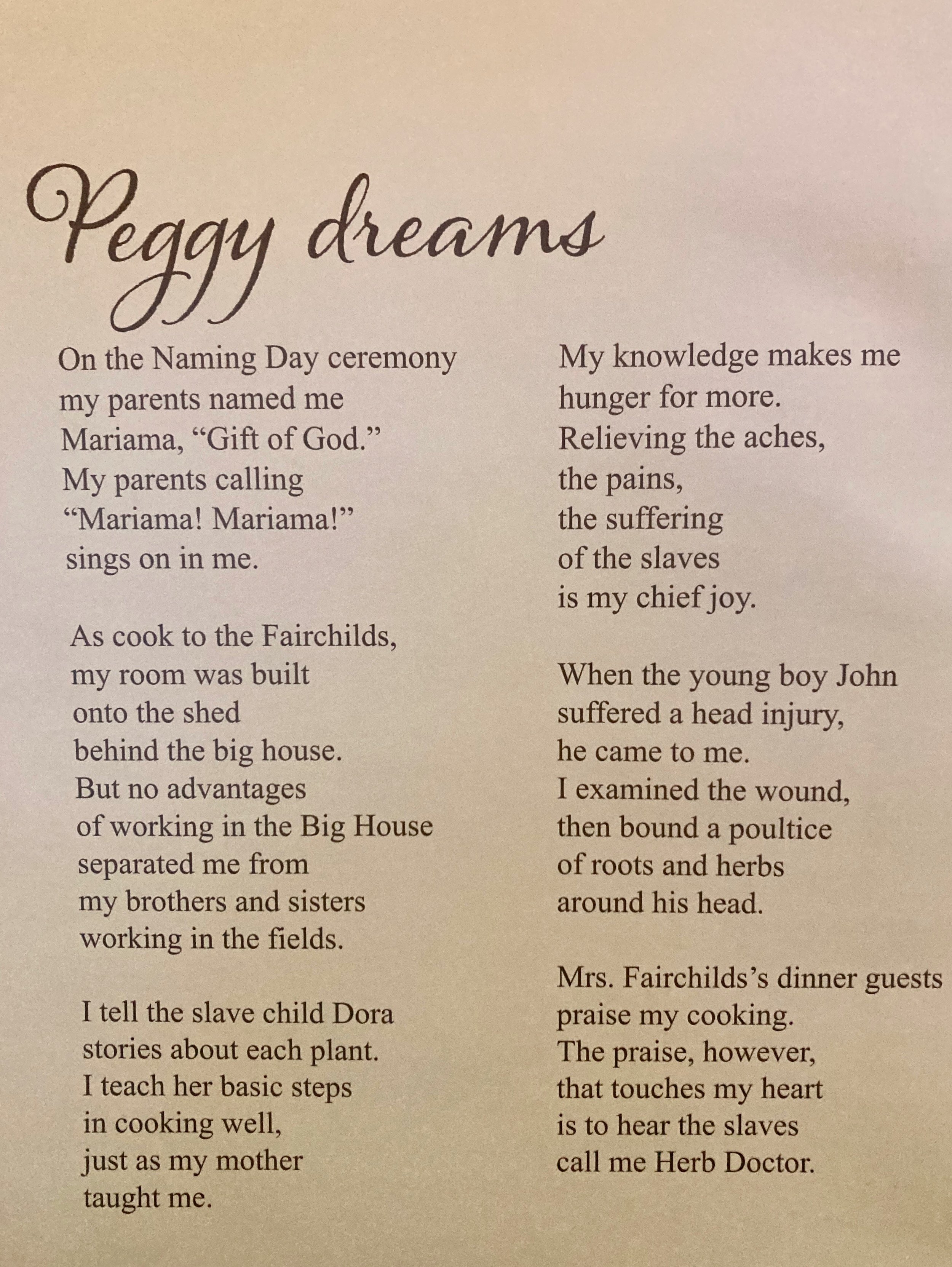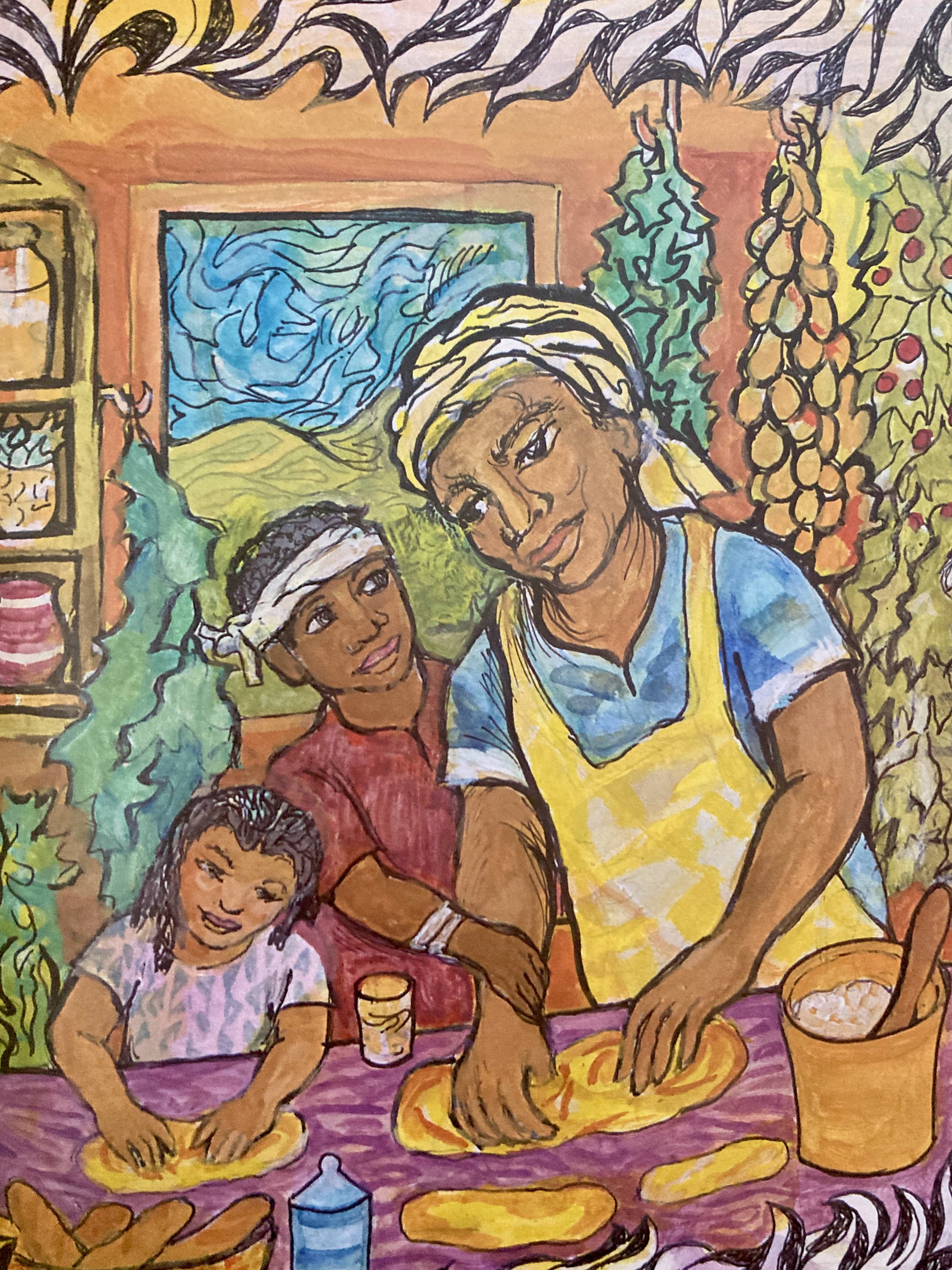Black History 2024: Ashley Bryan's Freedom Over Me
Illustration from Ashley Bryan’s Freedom Over Me, courtesy of Simon and Schuster.
Eleven Slaves, Their Lives and Dreams Brought to Life
Several years ago, I had the good fortune to go to Little Cranberry Island, Maine to record the personal narrative of the legendary artist, writer, poet, anthologist, storyteller, and scholar of African and African-American folklore, Ashley Bryan (July 13, 1923 - February 4, 2022).
As a small way of honoring the life of this extraordinary human being, I begin this post with his recitation of Langston Hughes’ poem My People, delivered full heart and soul, the only way Ashley knew how. Click on the poem to access his reading.
Ashley’s SPI narrative gives context to much of his work and is an important resource for those wishing to come to know the man behind his hugely celebrated and admired body of work.
Black History Month 2024. If you are looking to further students’ knowledge of Ashley and, at the same time, have them take a deep dive into creative thinking, writing, art, and research, consider integrating an SPI original project that is directly related to his book Freedom Over Me into the classroom or independent study.
About Freedom Over Me. Peggy, John, Charlotte and child, Stephen, Mulvina, Jane, Athelia, Qush, Bacus, Betty. It is with little more than these names that Ashley’s book began. He explained in his author's note that he acquired a collection of slave-related documents and found among them an 1828 estate appraisal for the Fairchilds: “Eleven slaves are listed for sale with the cows, hogs, cotton; only the names and prices of the slaves are noted (no age is indicated).” From those names, Ashley imagined lives into being.
More from School Library Journal: “Using real documents from an estate appraisal dated July 5, 1828, Bryan has created beautiful portrait paintings for 11 people who were named and priced as property on the Fairchildses' estate (the documents are reproduced fully in the endpapers and in segments throughout the work). Relying on narrative poetry to explore each figure's inner and outer life, Bryan gives voice to their history, their longing for freedom, and their skills as artisans, cooks, musicians, carpenters, etc. Each person has two visual portraits, with each accompanied by a poem (on the opposite page). Collaged historical documents of slave auctions fill the negative space of the first portrait frame. The second portrait depicts that person in a private dream, often a dream for safety, family, community, or the freedom to create. Peggy, a self-taught expert herbalist and cook for the Fairchildses, knows that although she works hard, everything goes to the estate. She dreams of her Naming Day ceremony and her parents calling to her, "Mariama! Mariama!" Each portrait reflects the role of song, call-and-response, ceremony, spirituality, community, and griots in living a double life—doing what was demanded while keeping close in their hearts the "precious secret," the constant yearning for freedom.”
The Project. After listening to Ashley’s Story Preservation narrative and reading his book Freedom Over Me (or viewing the Project Images below), the project directs students to research slave stories online through the Library of Congress collection Born in Slavery: Slave Narratives from the Federal Writers’ Project, 1936 to 1938 (link provided). They are then tasked with creating their own picture book or story using FoM as a template.
The student’s stories and/or books should include creative and thoughtful background information and a “dream” narrative on either a person/people chosen from the Library of Congress collection or an imagined person/people. In addition, students are directed to the online sites of the African Burial Ground, New York City, and the African Burying Ground, Portsmouth, New Hampshire (links provided).
So many questions to be asked. Who were these people? Where did they come from? What did they leave behind? What were their lives, their dreams, their talents, their hopes and fears?
The project and all related URLs can be accessed through a link on Ashley’s SPI page.
More on SPI’s visit to Little Cranberry Island can be found by clicking here.
Project Images:
About Story Preservation Initiative
Our Mission: Story Preservation Initiative believes in the transformative power of story to connect people around our common humanity and create a better future.
Our Work: We are a leading producer and online distributor of original, content-rich audio-based narratives for K-12 students. SPI stories are the raw materials of history, roadmaps to scientific discovery, and windows to the minds of artists and skilled tradesmen and women. SPI also makes available original projects and educator prompts developed to deepen student engagement and learning.
What We Achieve: SPI brings listeners into personal contact with extraordinary people whose stories engage their hearts and minds, imparting content knowledge and fostering curiosity, creativity, and critical thinking as they open doors to possible career paths in professions associated with the arts, sciences, humanities, and skilled trades.
SPI was founded in 2010. We are fully open-source.
SPI produces original, primary source recordings of extraordinary people who share their knowledge and experience with young people to educate, inspire, and make learning meaningful and real-world relevant.
Your support helps us continue our work. Please consider a donation in any amount. All contributions are tax-deductible as allowed by law. Click HERE to donate.








